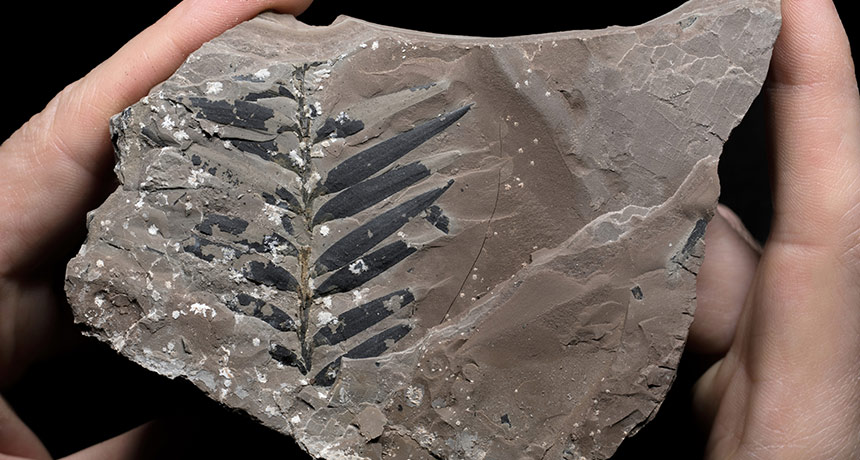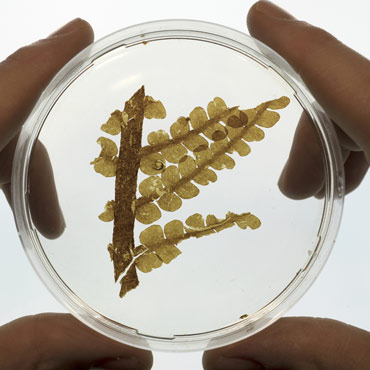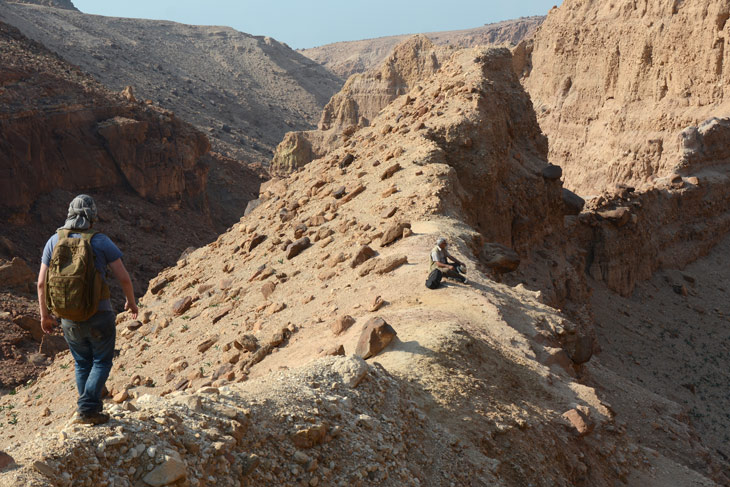More plants survived the world’s greatest mass extinction than thought
Fossils in a Jordanian desert reveal plant lineages that didn’t perish in the Great Dying

CONE ZONE Found near the Dead Sea, this fossil of a conifer that lived more than 252 million years ago belongs to a family of plants that’s still around today.
Palaeobotany Research Group Münster
- More than 2 years ago
Some ancient plants were survivors.
A collection of roughly 255-million-year-old fossils suggests that three major plant groups existed earlier than previously thought, and made it through a mass extinction that wiped out more than 90 percent of Earth’s marine species and roughly 70 percent of land vertebrates.
The fossils, described in the Dec. 21 Science, push back the earliest records of these plant groups by about 5 million years. “But it’s not just any 5 million years — it’s those 5 million years that span the Permian-Triassic boundary,” says study coauthor Benjamin Bomfleur, a paleobotanist at the University of Münster in Germany. The find adds to the growing list of land plants that survived the catastrophe known as the Great Dying, the world’s greatest mass extinction, which occurred about 252 million years ago at the end of the Permian Period.
Bomfleur and his colleagues found the new fossils in desert rock outcroppings near the Dead Sea in Jordan. Paleontologists have been searching those rock formations for decades. “Every time we go, we find new fossils,” he says.

The team found fossils belonging to the Podocarpaceae family, a large group of cone-bearing plants that now live in the Southern Hemisphere. It’s the oldest fossil evidence from any family of conifers that still exists today.
And the fossils showed that two other major seed plant lineages that are now extinct — Bennettitales and Corystospermales — were around during the Permian and survived the die-off. The Bennettitales are particularly noteworthy because they produce flowerlike reproductive structures and might have been distant cousins to flowering plants, which first showed up about 125 million years ago.
Today, the tropics are hot spots for biodiversity, and it’s thought that the ancient tropics were too. But there’s very little fossil evidence, says Fabiany Herrera, a paleobotanist at the Chicago Botanic Garden. Based on previous genetic analyses, it would make sense for some of these ancient tropical plant groups to have survived the mass extinction. “But we had no fossils,” Herrera says — and that’s the only way to know for sure. “Now we have them.”








